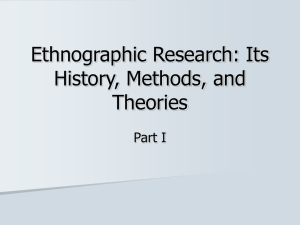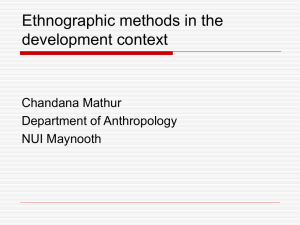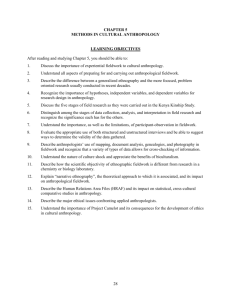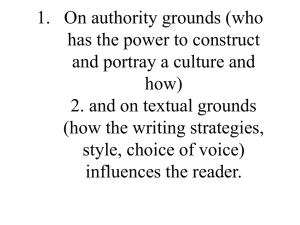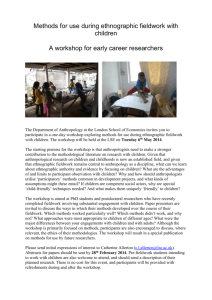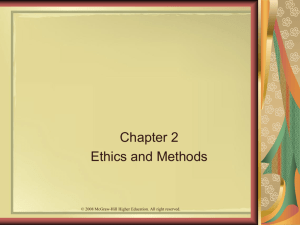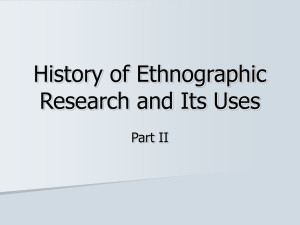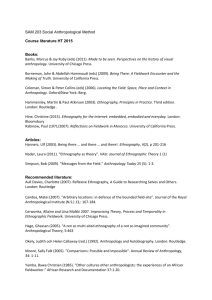Qualitative Methods Bibliography for Field Research
advertisement
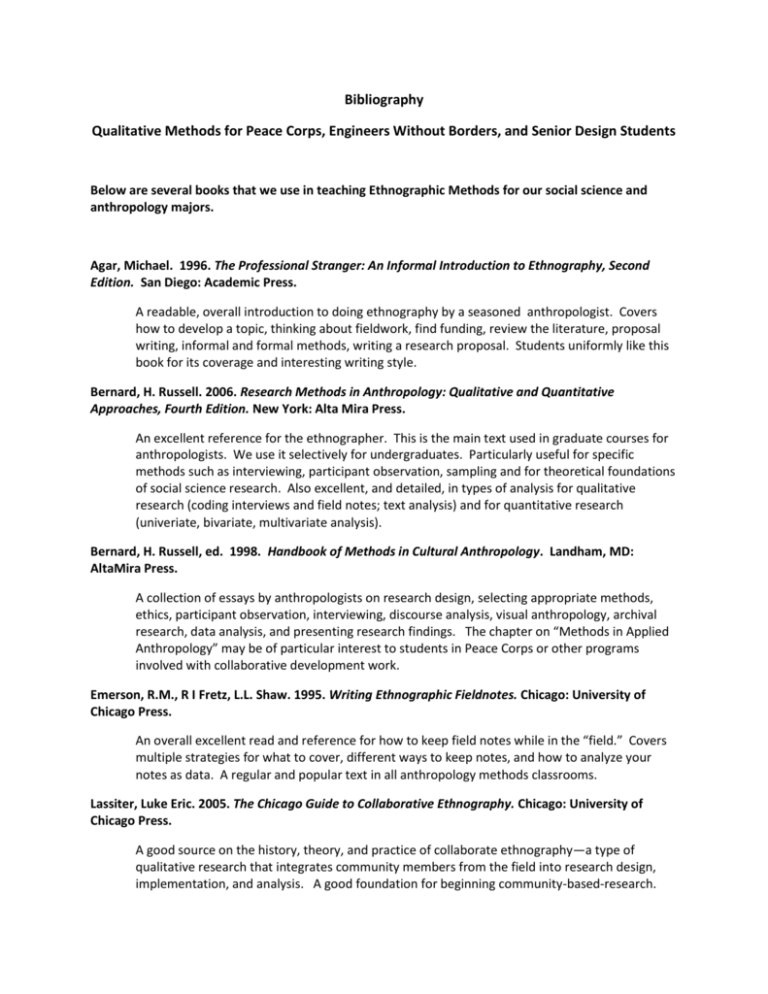
Bibliography Qualitative Methods for Peace Corps, Engineers Without Borders, and Senior Design Students Below are several books that we use in teaching Ethnographic Methods for our social science and anthropology majors. Agar, Michael. 1996. The Professional Stranger: An Informal Introduction to Ethnography, Second Edition. San Diego: Academic Press. A readable, overall introduction to doing ethnography by a seasoned anthropologist. Covers how to develop a topic, thinking about fieldwork, find funding, review the literature, proposal writing, informal and formal methods, writing a research proposal. Students uniformly like this book for its coverage and interesting writing style. Bernard, H. Russell. 2006. Research Methods in Anthropology: Qualitative and Quantitative Approaches, Fourth Edition. New York: Alta Mira Press. An excellent reference for the ethnographer. This is the main text used in graduate courses for anthropologists. We use it selectively for undergraduates. Particularly useful for specific methods such as interviewing, participant observation, sampling and for theoretical foundations of social science research. Also excellent, and detailed, in types of analysis for qualitative research (coding interviews and field notes; text analysis) and for quantitative research (univeriate, bivariate, multivariate analysis). Bernard, H. Russell, ed. 1998. Handbook of Methods in Cultural Anthropology. Landham, MD: AltaMira Press. A collection of essays by anthropologists on research design, selecting appropriate methods, ethics, participant observation, interviewing, discourse analysis, visual anthropology, archival research, data analysis, and presenting research findings. The chapter on “Methods in Applied Anthropology” may be of particular interest to students in Peace Corps or other programs involved with collaborative development work. Emerson, R.M., R I Fretz, L.L. Shaw. 1995. Writing Ethnographic Fieldnotes. Chicago: University of Chicago Press. An overall excellent read and reference for how to keep field notes while in the “field.” Covers multiple strategies for what to cover, different ways to keep notes, and how to analyze your notes as data. A regular and popular text in all anthropology methods classrooms. Lassiter, Luke Eric. 2005. The Chicago Guide to Collaborative Ethnography. Chicago: University of Chicago Press. A good source on the history, theory, and practice of collaborate ethnography—a type of qualitative research that integrates community members from the field into research design, implementation, and analysis. A good foundation for beginning community-based-research. Smith, Linda Tuhiwai. 1999. N. Decolonizing Methodologies: Research and Indigenous Peoples. New York: Zed Books. Written by a Maori social scientist, a theoretical and practical guide for development of research projects by indigenous scholars. Discussion of Western social science research strategies from an indigenous perspective is eye-opening to Western researchers and helps them navigate the difficult waters of “outsider” research (See chapter 2 – Research through Imperial Eyes). Students find this thought provoking and very helpful in framing research projects in nonWestern communities. Sunstein, B.S. and E. Chiseri-Strater. 2007. FieldWorking: Reading and Writing Research, Third Edition. New York: St. Martin’s Press. An excellent undergraduate text that introduces students to fieldwork. Many exercises and examples for all stages of research—from ethics, participant observation, interviewing, keeping field notes, analyzing data, and writing the ethnographic report. Our students have found this a great guide to doing classroom research projects in their own communities. Helps you find and analyze the “culture” in every location—from the mundane to the exotic. Wolcott, Harry F. 1995. The Art of Fieldwork. Walnut Creek, CA: AltaMira Press. An engaging overview of approaches to ethnographic fieldwork, issues that arise in the field, data collection and analysis, and writing up results. Students enjoy the readable and reflective nature of this book, which sees fieldwork as more of an art than a technical skill.
